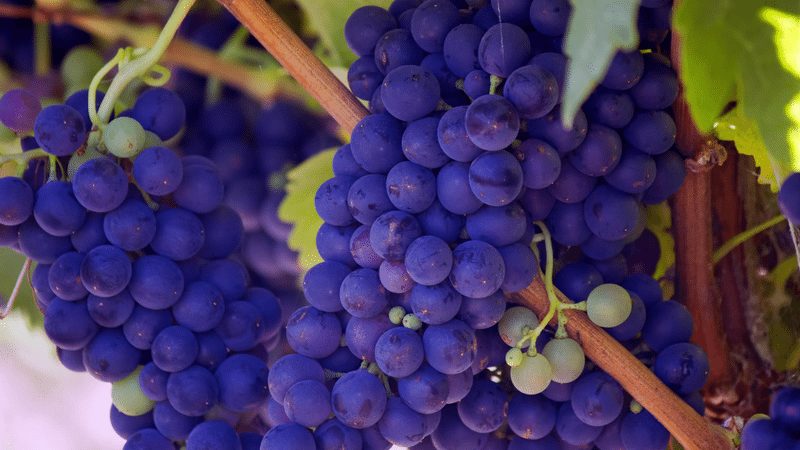Sangiovese
Episode #7 of the course Wine basics: Top ten wine varietals by Saffron Hickey
Today, our top wine varietal is Sangiovese (san-joe-vay-zeh). This red wine grape is rarely grown outside of its home in Tuscany, Italy. The name may be unfamiliar, as Italian wines are frequently named after location rather than varietal. Place names are useful for Sangiovese, which alters its genetics for environmental differences. Sangiovese is often standalone, but small amounts of indigenous or international grapes may be incorporated.
Major Regions
The most famous region within Tuscany is Chianti, where Sangiovese is also known as sangioveto. Chianti is a large zone. Chianti Classico comes from the core. Wines produced outside the core are named after their area, such as Chianti Rufina, or simply “Chianti.” Chianti is 75-100% Sangiovese and may be lightened with white varietals Trebbiano or Malvasia. Chianti also produces the innovative Super-Tuscan wines, which consist of Sangiovese blended with non-traditional varietals like Cabernet Sauvignon or Merlot.
Another producer in Tuscany is Montalcino; here, Sangiovese is called brunello and used for bold, aged Brunello di Montalcino or younger, lighter Rosso di Montalcino. In Montepulciano, Sangiovese is called prugnolo, used to make Vino Nobile di Montepulciano.
Carmignano produces wines that are 80-90% Sangiovese and 10-20% Cabernet Sauvignon or Cabernet Franc.
Characteristics
Note: The scents and tastes people perceive in wine vary greatly depending on individual palates, production methods, climate, and more.
Sweetness: Sangiovese is a dry red wine with medium/high tannins and high acidity.
Appearance: Ruby-red to brick-red.
Aromas and flavors: Sour cherry, tomato, plum, roasted pepper, oregano, figs, strawberry, rose, violets, clay, balsamic, black tea, leather, chestnuts, prunes, cloves.
Body: Medium- to full-bodied.
Aging: Length of aging is controlled by quality regulations for the best result in different regions. Chianti is enjoyable young, while the higher tannins of Brunello di Montalcino require four years of aging. Carmignano is usually aged 18 months, while Vino Nobile di Montepulciano is aged two years. Sangiovese may undergo additional aging to achieve Riserva designation.
Food Pairing
The medium body and high acidity of Sangiovese make it food friendly. Sangiovese complements dishes with herb and tomato flavors, which highlight fruit notes. Incorporating olive oil and butter softens tannins. Ideal dishes are tomato-based pasta, Neapolitan pizza, Caprese salad, grilled vegetables, Italian deli meat, rare steak, and aged parmesan or pecorino cheese.
Selection Guide
Place names provide clarity by expressing differences between regions. Strict quality control ensures consistency. Quality classifications are marked on the label. The highest levels, DOCG and DOC, indicate high-quality, traditional wine. Classico signifies grapes grown in the oldest zones. Though not as highly classified, Super-Tuscan wines are high-end with bold flavors.
Don’t forget Sangiovese’s other names: Sangioveto, Brunello, and Prugnolo. Here are a few more names you may see and what to expect:
• Chianti, Rosso di Montalcino: lighter body, fruity, acidic
• Chianti Classico, Carmignano: medium body, spice notes, complex, potential to age in the bottle
• Chianti Classico Riserva, Brunello di Montalcino, Vino Nobile di Montepulciano: full body, savory, high tannins, high potential to age in the bottle
Riserva wines have undergone additional aging but are not necessarily of higher quality. Increased aging simply results in different, less fruity flavors. Young wines, particularly Chianti, are equally enjoyable and easier to pair with food.
Tomorrow, learn about the noble Spanish Tempranillo!
Recommended reading
Puckette, Madeline, 2013. Guide to Sangiovese Wine. New York, NY: Wine Folly.
Slinkard, Stacy, 2017. Sangiovese Wine Grape Profile. New York, NY: The Spruce.
Thexton, Jeanne, 2016. Sangiovese. London: Decanter.
Recommended book
Share with friends

